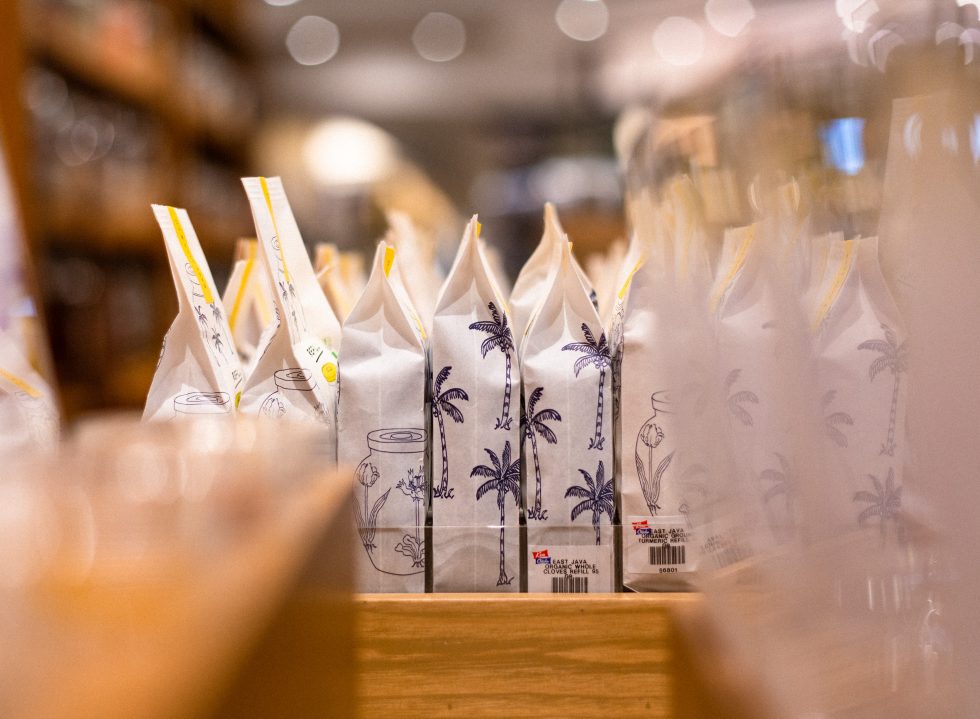A shared love of cooking and travelling was what prompted the start of East Java & Co back in 2016. Through animated illustrations and savvy, eco-friendly packaging, couple and co-founders Yasmin Sandytia and Leo Schwarz play out their dedication to sourcing quality, natural ingredients to build the brand’s “good, honest food” spirit by working with local farmers and mobilising sustainable practices.
This sentiment manifests itself in every single product, from award-winning fruit jams and marmalades, organic rice, to their range of single origin herbs, loose leaf teas and spices. Sourced across the archipelago, cloves, nutmegs, and mace trail from Sangihe, Sulawesi, coarse sea salt from Amed, Bali, while the long peppers are from Lampung, Sumatra.
These, along with their range of herbs and teas, fill up the jars lining up the shelves at the refill boutique at Kem Chicks in Pacific Place, now available to purchase by the gram both in-store and online. Resembling the traditional blue and white ginger jars that were once used to transport spices across Asia, the jars are done in collaboration with ceramicist Ayu Larasati and individually hand-painted by Yasmin, who is also an illustrator.
True to the couple’s penchant for storytelling, each storage ceramic paints a modern perspective on the unique and rich history of Indonesia’s spice trade, while also addressing current challenges that the country is facing; drawings of a row of dead men laying under nutmeg trees depict the violent fate that faced the Bandanese in the struggle for the spice, while the narrow architecture of Amsterdam streets sets as a reminder of the riches they amassed through spice trading. On to present-day reality, drawings of plants and buildings submerged in water show Jakarta’s enduring flood problem.
While East Java & Co has always placed great emphasis on the ingredients’ origins, this time with their refill boutique, they take further action with practical and sustainable ways of stocking up these pantry goods.
From buying the exact quantity of ingredients to tackle food waste and resorting to no-plastic packaging, the idea ultimately is to start getting customers to bring their existing containers and restock spices according to their needs. No more, no less.











